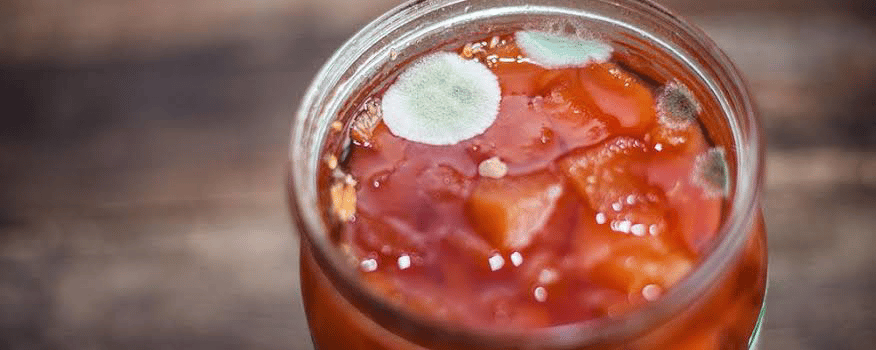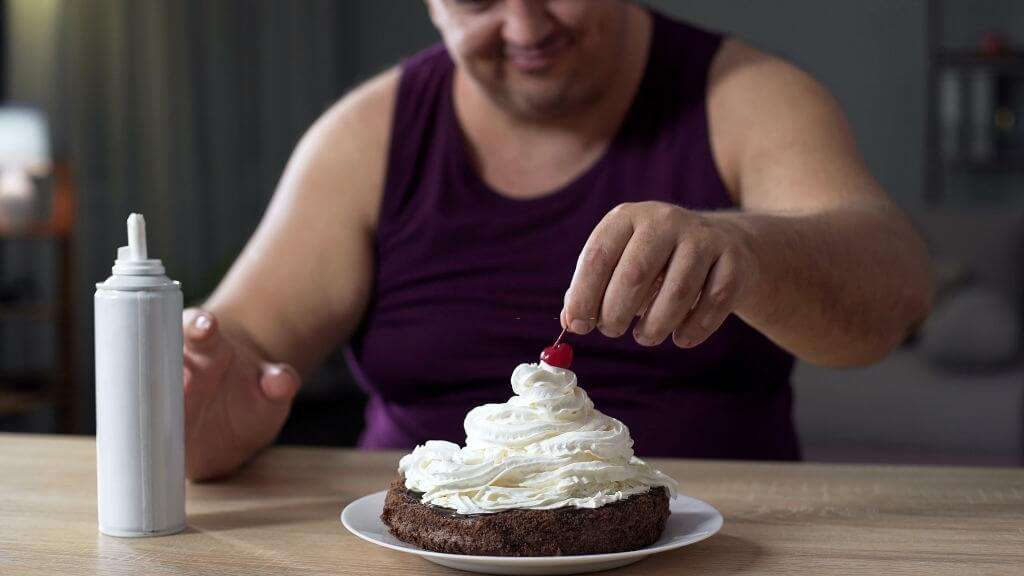Of all the food-borne illnesses, botulism is the most fatal. The clostridium botulinum bacteria is the microorganism behind botulism.
Botulism is actively associated with home-canned foods like canned tomatoes or pickles.
The botulinum bacteria that causes botulism can grow in the fridge, conditionally, of course. Proteolytic botulinum strains only reproduce in the refrigerator if the temperature is higher than 12 degrees Celsius. Meanwhile, non-proteolytic botulinum strains can thrive in refrigerator temperatures as low as 3 and 4 degrees Celsius.
Additionally, botulinum in botulinum-infected food refrigerated without a cover or seal will keep on growing.
So, botulism grow in the refrigerator? Keep reading as we uncover additional information about botulism.
Can botulism grow in the refrigerator?
Yes, botulism can grow in the refrigerator.
Most believe that the refrigerator inhibits the growth of botulinum entirely, but that’s a half-truth. What people often fail to mention is that while proteolytic botulinum strains will not grow in a fridge temperature less than 12 degrees Celsius, their non-proteolytic counterparts will. Non-proteolytic botulinum strains will grow even in fridge temperatures of 3 and 4 degrees Celsius.
If you can not count on your refrigerator to inhibit the growth of botulism in your food, there are other methods. Heating the food for at least five minutes till it assumes an 85-degree Celsius internal temperature is one of them.
Can botulism grow in the refrigerator in a sealed canning jar?
Yes, botulism can mature in the refrigerator in a sealed canning jar.
Food-borne botulinum has links with improperly home-canned or home-bottled foods.
If you don’t cook your home-canned food until it has an internal temperature of 85 degrees Celsius, it is at risk of further botulism growth even if it is refrigerated.
You can reduce the chances of botulism infection by cooking your home-canned food in a pressure cooker at 116 degrees Celsius till it has an 85-degree Celsius internal temperature for at least 5-10 minutes before refrigerating.
What the above process does is kill any botulinum bacteria spores that may be on your food.
How long does it take for botulism to grow at room temperature?
It takes about three or four days.
During these days, botulinum spores develop into cells that result in botulinum toxins, which cause botulism infection.
Read also: Can You Use Heavy Whipping Cream After Expiration Date?
How to tell if canned food has botulism
Your canned food may have botulism if:
- The container may take on a damaged or dented look than before.
- The food smells rotten, is discolored, or has mold growth.
- You notice bubbles or an awkward-looking liquid when you open the container.
- The lid of the container is loose.
- The can have begun to rust.
- The container leaks or is swollen.
- The jar or can has a bulging cover or lid.
- The container makes a loud hiss when opened.
How to make botulinum toxin
You can knowingly or unknowingly cultivate botulinum toxins by improperly home-canning low-acid foods such as fish, fruits, and vegetables in anaerobic conditions.
How to prevent botulism
You can prevent food-borne botulism with these easy procedures:
- Look out for signs of botulism growth in your canned food (mentioned above).
- Place foods in the refrigerator within two hours after cooking.
- Cook your meals thoroughly till they achieve an 85-degree Celsius internal temperature.
- Use foods that have been preserved in oil within 10 ten days of opening them.
- Refrigerate your leftovers as soon as possible.
- Follow home-canning rules strictly.
- Always refrigerate foods with a ‘keep refrigerated’ tag on them.
What does botulism look like in canned foods?

Photo by Real_life_Studio via Shutterstock
The above image shows signs of mold growth. It is one of the ways your canned food may look if it is infected with botulism. Other evidence of botulism in canned food includes:
- The container may look more dented or awkwardly shaped than before.
- The food develops a foul smell.
- The food looks discolored.
- You notice bubbles when you open the container.
- The liquid or oil in the container looks different and discolored.
- The lid of the container is loose.
- The can begins to rust.
- The container is swollen or looks like it is about to burst.
- The container is cracked and leaks.
- The jar or can has a bulging cover or lid.
- The container makes a loud hiss when opened.
Read also: Can You Get Sick From Eating Expired Food Coloring? Can They Kill You?
What type of foods is botulism easily found in?
Botulism is usually in low-acid foods such as potatoes, corn, beets, tomatoes, fish, figs, asparagus, green beans, and meat products like sausage and ham, spinach, lettuce, and pickles.
Can botulism be killed by baking?
Yes, you can kill botulism by baking.
Botulinum bacteria do not thrive in high temperatures, so baking your food will help eliminate this disease-causing bacterium.
You can kill botulinum spores by heating your food at 250 degrees Fahrenheit. Meanwhile, to get rid of botulinum toxins, you should heat your food at 185 degrees Fahrenheit for at least five minutes or 175 degrees Fahrenheit for 10 minutes or above.
Can botulism be killed by cooking?
You can kill botulinum bacteria by cooking.
The botulinum bacteria is very thermo-phobic, which means it will not survive in high-temperature conditions.
If you cook your food at a temperature of 250 degrees Fahrenheit, you will successfully have killed any botulinum spores that’d likely cause the botulinum toxins to grow.
Cooking your food till it assumes an internal temperature of 185 degrees Fahrenheit for five minutes or more will help kill any botulinum toxins. Alternatively, you can cook your food at 175 degrees Fahrenheit for 10 minutes or more to achieve the same result.
Can botulism be killed by freezing?
No, you can not kill botulinum bacteria by freezing.
Freezing inhibits the growth of botulinum spores so that they don’t further develop into botulinum toxins.
Only heating your food at high temperatures kills botulinum bacteria.
We outlined how to kill botulinum spores and toxins using high temperatures earlier in this post.
We also indicated specific attributes that suggest botulism infection in your food for prevention purposes.
Does salt kill botulism?
Salt does not kill botulinum spores.
Instead, salt prevents the botulinum spores from germinating into deadly botulinum toxins.
A saline solution containing about 10% salt will help ward off further growth of botulinum spores in home-canned food.
The salt regulates the amount of water or liquid available for the botulinum to act on by taking hold of most of the water content.
What conditions encourage the germination of Clostridium botulinum endospores?
The following are conditions that encourage the growth of botulinum spores:
- Temperature range.
- PH (acid content).
- Anaerobic environment.
- Water or moisture content.
- Low salt content.
– Temperature range
Proteolytic botulinum spores often grow well in temperatures between 55 and 122 degrees Fahrenheit. They experience very rapid growth at about 95 degrees Fahrenheit.
Non-proteolytic botulinum spores thrive well between 38 and 113 degrees Fahrenheit.
– PH (acid content)
A near neutral or neutral (7) ph is the best breeding environment for botulinum spores. Meanwhile, alkaline or highly acid foods inhibit the growth of botulinum spores.
– Anaerobic environment
Botulinum is very potent in the absence of oxygen. This microorganism finds it hard to develop where there’s oxygen. This is why botulism is very common with canned goods, as air is trapped in the can, giving the organisms a safe apace to blossom.
– High water or moisture content
High moisture or water content activates botulinum. Hence, the limited availability of water or humidity controls its growth.
– Low salt content
If you home-canned some food with liquid or water in the jar, your food is at risk of botulinum growth. There’s no additive like salt to take advantage of the high-water content. The salt limits the amount of water/moisture available for the botulinum spores to germinate.




